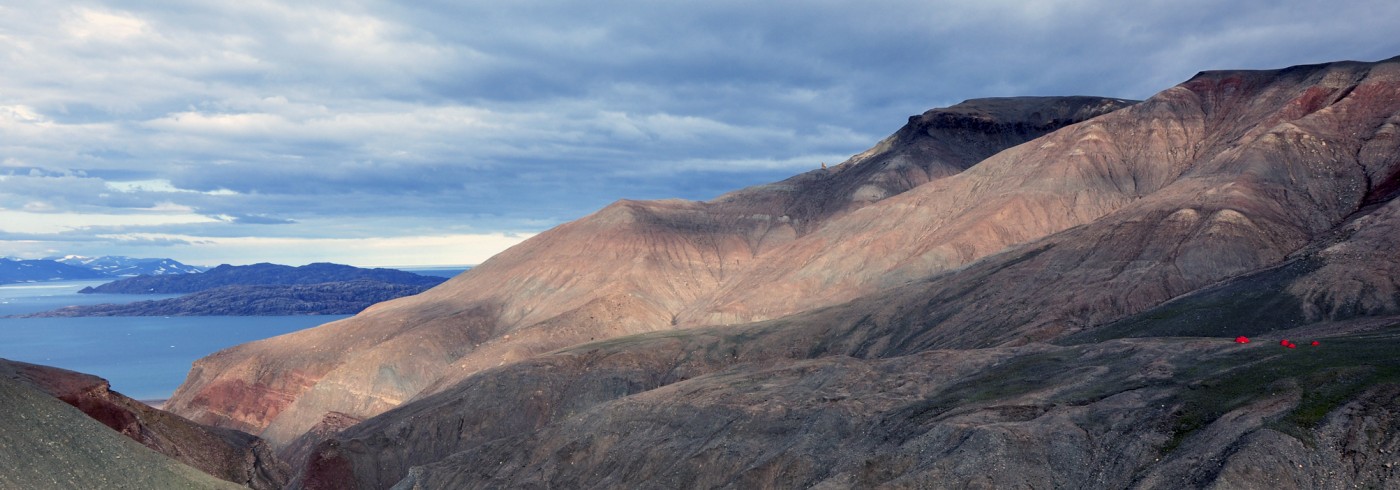First steps to and from the water
28 July 2015 - 28 August 2015Vertebrates first emerged onto land during the Devonian, 358 million years ago. They returned to the sea 108 million years later, in the earliest Triassic. These events are recorded by fossils, which reveal profound transitions from fins to limbs, and then flippers, as well as the development of live birth in water. But what environmental pressures drove these landmarks for life on Earth?
Only one place preserves rocks that simultaneously give evidence of such evolutionary milestones – East Greenland. We targeted the world-famous, yet extremely remote, deposits at Celsius Bjerg on Ymer Island and Kap Stosch on Hold With Hope to reconstruct the earliest tetrapod (limbed animals) and secondary marine amniote (land-living animals) ecologies. In particular, we searched for trace fossils including footprints and feeding residues, which can be used to link skeletal remnants with ancient habitat indicators left by living organisms.
During the expedition we successfully found not only the first definitive Devonian tetrapod trackway from Greenland, but also discovered new early fish species, and coprolites (fossilised droppings) that implicate novel food resources as a potential driver for reinvasion of the oceans 250 million years ago.





